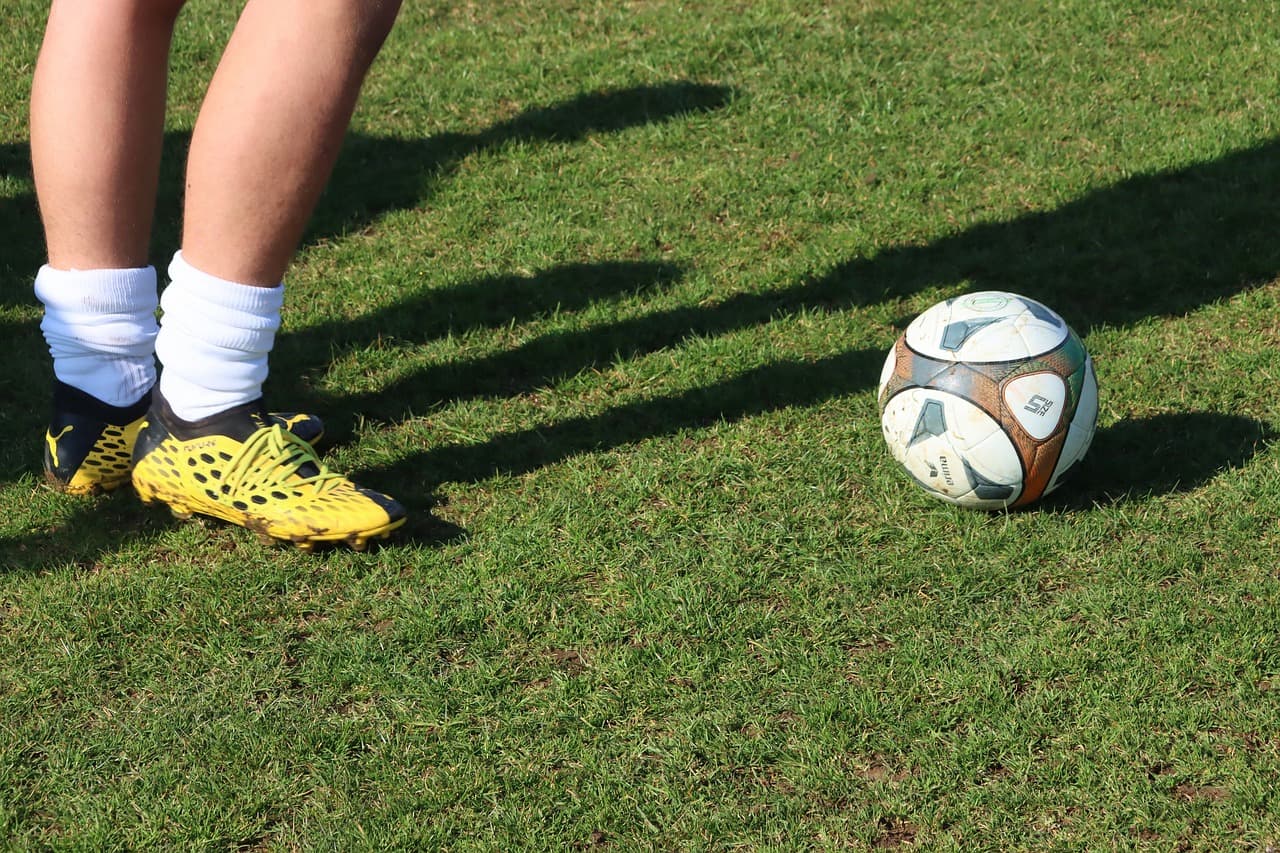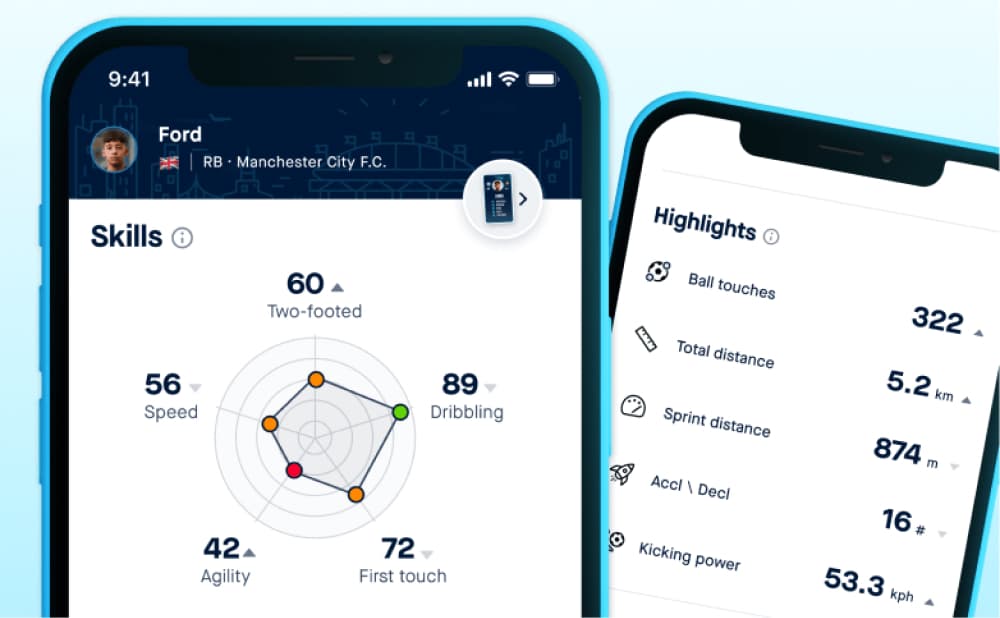Soccer is a highly competitive game with multiple players moving rapidly in all directions. In this environment, in addition to the benefits athletic activity provides, there is also a chance to sustain an injury.
You can’t fully avoid soccer injuries. But understanding the most common injuries in soccer can help you reduce the risks. . We’ve prepared a soccer injury list for you, plus some tips on how you can reduce the risk to get injured. .
Here is a list of the 9 most common injuries in soccer:
1. Soccer Knee Injury
Soccer player knee injury is a common occurrence in many games. These injuries occur due to many reasons, including joint overuse. Running is considered healthy and can strengthen the knee joint. But the more you run in a competitive game, the more stress you put on your knees. Eventually, you might start feeling pain around the kneecap or at the front of the knee. This condition is called the runner’s knee.
Training excessively can also cause inflammation in the knee called patellar tendinitis. It can also cause inflammation of the iliotibial tissue, which runs from the hip to the outer side of the knee. Increasing training gradually and carefully may help reduce the risk for these injuries.
2. Soccer Ankle Injury
Ankle sprain soccer injuries are among the most frequent in the game. Like other injuries, ankle sprain injuries occur more during matches than during practice. An injury to the ankle can occur due to uneven surface.. It can also occur due to fatigue of the muscles and ligaments. The shoes you wear and the way you step can also lead to an ankle injury.
3. Soccer Thigh Injury
Thighs or quadriceps are part of the muscle group you use the most in soccer games. Studies show that Quad injury in soccer accounts for more than 30% of all thigh injuries. As you run and tackle your opponents, thigh muscles contract and expand rapidly. Consistent overstretching of the fibers leads to a thigh strain. A thigh strain comes with muscle tears that cause pain.
4. Soccer Groin Injury
About 10% to 15% of soccer injuries involve the groin. Approximately 90% of players with groin injuries can’t kick the ball with maximum power. Sometimes, severe injuries to the groin can mean the end of a career. Some of the common causes of groin injury are inadequate stretching, previous injury, weakness, and fatigue of core muscles.
5. Soccer Hamstring Injury
The hamstring muscles behind your thigh provide the driving force to perform rapid movements. A hamstring injury soccer occurs when you sprint, jump, or turn. This soccer injury is among the most commonly reported. One study of an English premier league club showed that out of 93 players, 20 suffered hamstring injuries in one season.
6. Concussions in Soccer
Concussions in sports injuries are gaining popularity and reaching the epidemic level. A concussion is a serious injury in soccer because it can cause brain damage. It usually results from a head collision with another player. Concussions in soccer can lead to mild or severe symptoms. These include headaches, temporary loss of consciousness, dizziness, and loss of memory.
7. Hip Injury Soccer
Soccer is a highly intensive sport that can stress the pelvis and hip. Causes of hip injuries include hip dislocation and muscle strain. Players with a higher risk of hip injury include those who exercise a lot, those with previous hip surgery (osteitis pubis), and snapping hip syndrome.
8. Soccer Shin Injury
Shin injury in soccer occurs due to contact or overuse of muscles. Medial tibial stress syndrome is a common sports injury resulting from muscle overuse. Other causes of tibial stress include training too hard, changing training techniques, and a leg or soccer shoes problem.
9. Heel Injury Soccer
A soccer injury to the heel can be in a form of heel spur. A heel spur is a bony growth at the bottom of the heel. It results from too much strain on the ligaments of the heel. A heel spur becomes painful when you wear ill-fitting shoes or when you’re overweight. It also occurs when you train excessively.
How to Reduce the Risk of Injury in Soccer?
Soccer injury awareness is a better solution than treatment as it can save you from recovery time. Below are some of the tips you can follow to reduce the risk of soccer injuries;
- Wear protective gear such as shin guard and ankle protection
- Wear proper shoes with proper cleat length to avoid sliding and twisting your ankle
- Before every match, start with warm-ups to stretch muscles and limit muscle strains
- Strengthen your lower-body muscles through exercises like squats, calf raises, and lunges
- Give your body time to rest after an injury to avoid a more severe injury
How to Treat Soccer Injuries Properly to Reduce Recovery Time?
Sometimes injuries can not be avoided. That said, the best thing to do when injured is get appropriate treatment to reduce soccer recovery time. The following general tips can help you recover quickly from sports injuries.
Reduce Playing Time
After an injury, the first thing to do is rest until the pain stops. Then depending on the severity of the injury, avoid playing until you get better. Continuing to train with an injury can lead to more severe damage.
Seek Medical Treatment
A doctor can help assess the extent of an injury and provide reliable treatment. For serious injuries, your doctor can perform an MRI scan to identify the injured part of your body. Some injuries like knee cap dislocation are likely to recur if not well treated.
Elevate the Injured Area and Apply Ice
Elevation helps reduce fluid buildup in the injured area. Ice prevents swelling, an issue which can create more pressure on the injury. Consider wrapping the injured area with an elastic bandage to provide support and reduce swelling.
Stretching
Once the pain reduces, you can stretch the injured muscles gently. Doing this will help increase blood flow to the area and accelerate healing. Avoid over-stretching as this may create more problems to the injury.
How Soccer Trackers Reduce the Risk of Soccer Injuries and Help Recover from Injuries?
Soccer trackers such as Playermaker provide critical data on your feet movement during a match.
What’s more, Playermaker maintains a record of your training load. Monitoring the training load helps reduce the risk of an injury. Remember, anytime you go beyond your optimum level, you increase the chances of injury.
And in case you have an injury, Playermaker helps to monitor your training data to help you resume your efforts gradually. You can set lower training goals during an injury and improve them progressively until you reach your optimum intensity.








